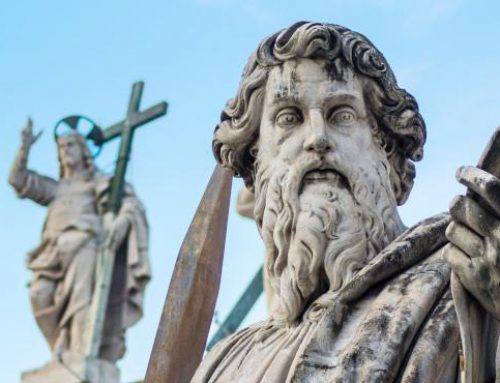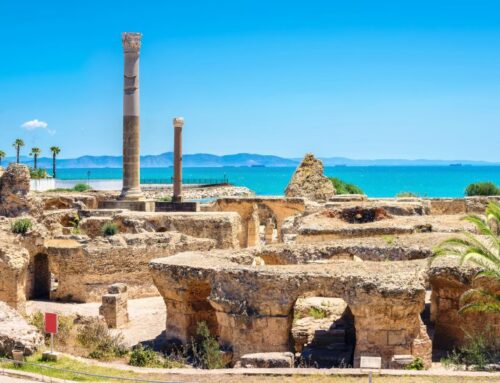The Gospels do not tell us very much about Mary Magdalene. She was one of a group of women who followed Jesus and who provided for him out of their means (Luke 8:2).
She was a woman called Mary who came from Migdal Nunaya, Tariquaea in Greek, a small town on the western shore of the Sea of Galilee, some 3 miles north of Tiberias.
Jesus had expelled seven demons from her (Luke 8:2; Mark 16:9), which is the same as saying “all the demons”. This could mean possession by the devil, but it could also mean a bodily or spiritual sickness.
The synoptic Gospels mention her as being the first of a group of women who observed the crucifixion of Jesus from a distance (Mark 15:40-41) and who were sitting opposite the tomb (Matt 27:61) when they were burying Jesus (Mark 15:47). They tell us that very early in the morning on the day after the sabbath Mary Magdalene and other women returned to the tomb to anoint the body with spices which they had bought (Mark 16:1-7). Then an angel informs them that Jesus has risen, and instructs them to go and tell the disciples.
Saint John gives us the same information with slight variations. Mary Magdalene is beside the Virgin Mary at the foot of the cross (John 19:25). Early on the day after the sabbath, while it was still dark, she comes to the tomb, sees that the stone has been taken away and goes to tell Peter, thinking that someone has stolen the body of Jesus (John 20:1-2). She returns to the tomb and is weeping there when she meets Jesus who tells her to announce to his disciples that he is to ascend to his Father (John 20:11-18). That is her glory.
That is why the tradition of the Church in the East has called her “isapostolos” (equal to or equivalent to an apostle), and the Church in the West “apostola apostolorum” (apostle of apostles). There is a tradition in the East that she was buried in Ephesus and that her relics were taken to Constantinople in the 9th century.
Mary Magdalene has often been identified with other women in the Gospels.
From the 6th and 7th centuries in the Latin Church they tended to identify Mary Magdalene as the sinful woman who, in the house of Simon the Pharisee, bathed the feet of Jesus with her tears (Luke 7:36-50).
Some Fathers of the Church and ecclesiastical writers, harmonising the Gospels, had already identified that sinful woman as Mary, the sister of Lazarus, who, in Bethany anoints the head of Jesus with perfume (John 12:1-11). Matthew and Mark do not mention the name of Mary, but just say that it was a woman, and that the anointing took place in the house of Simon the leper (Mt 26, 6-13).
As a result, due largely to Saint Gregory the Great, in the West the idea spread that the three women were all the same person. However, nothing in the Gospels indicates that Mary Magdalene is the same person as the Mary who anoints Jesus in Bethany, because it seems that the latter is the sister of Lazarus (John 12:2-3). Nor can one conclude that she is the sinner who according to Saint Luke bathed Jesus’ feet with her tears. In this case, however, the identification is understandable since Saint Luke, immediately after the account of Jesus forgiving this woman, says that Jesus was helped by some women, among whom was Mary Magdalene from whom he had expelled seven demons (Luke 8:2).
Furthermore, Jesus praises the love of the sinful woman: “Her sins, which are many, are forgiven, for she loved much” (Luke 7:47), and we also discern great love in the encounter which Mary has with Jesus after the resurrection (John 20:14-18). In any case, even if it were the same woman, her sinful past is not a dishonour. Peter was unfaithful to Jesus, and Paul was a persecutor of Christians. Her greatness lies not in her being impeccable, but in her love.
Because of her prominent role in the Gospel she received special attention from some fringe groups of the primitive Church. These were basically Gnostic sects whose writings gathered together secret revelations of Jesus after the resurrection and made use of the figure of Mary for transmitting his ideas. They are stories that have no historical foundation.
Fathers of the Church, ecclesiastical writers and other works highlight the role of Mary as a disciple of the Lord and proclaimer of the Gospel. From the 10th century onwards some fictitious stories appeared which exalted her and which spread mainly in France. It is there that the legend grew up, which has no historical foundation, that Mary Magdalene, Lazarus and some others, when the persecution of the Christians began, went from Jerusalem to Marseille and evangelised Provence. According to this legend Mary died in Aix-en-Provence or Saint Maximin and her relics were taken to Vezelay.
Juan Chapa








… [Trackback]
[…] Read More Infos here: earlychristians.org/who-was-mary-magdalene/ […]